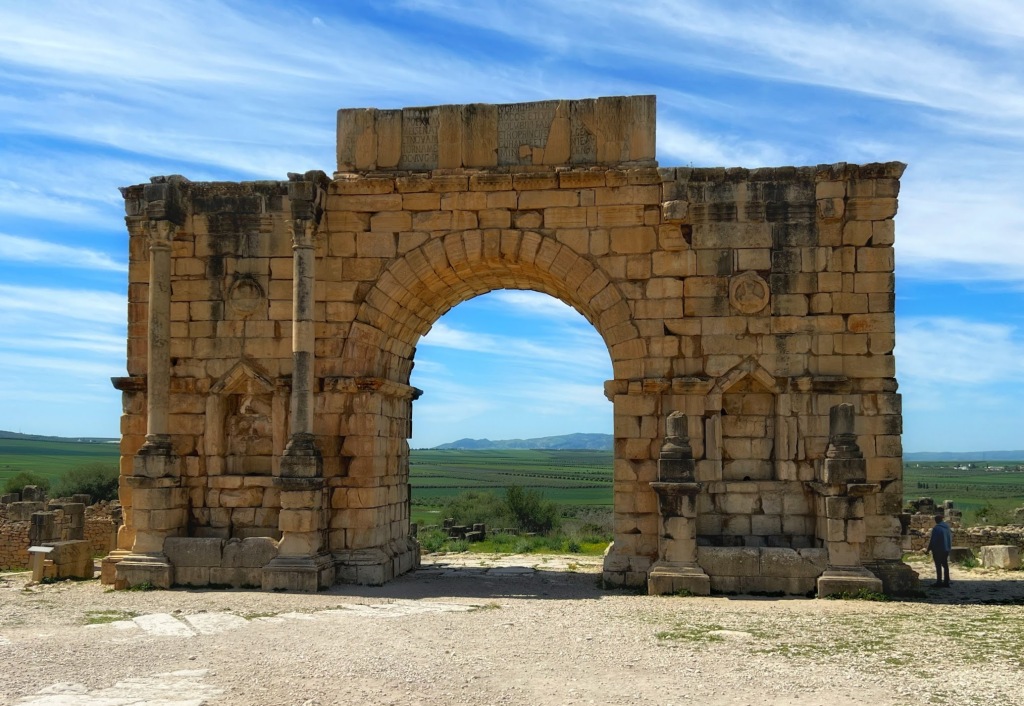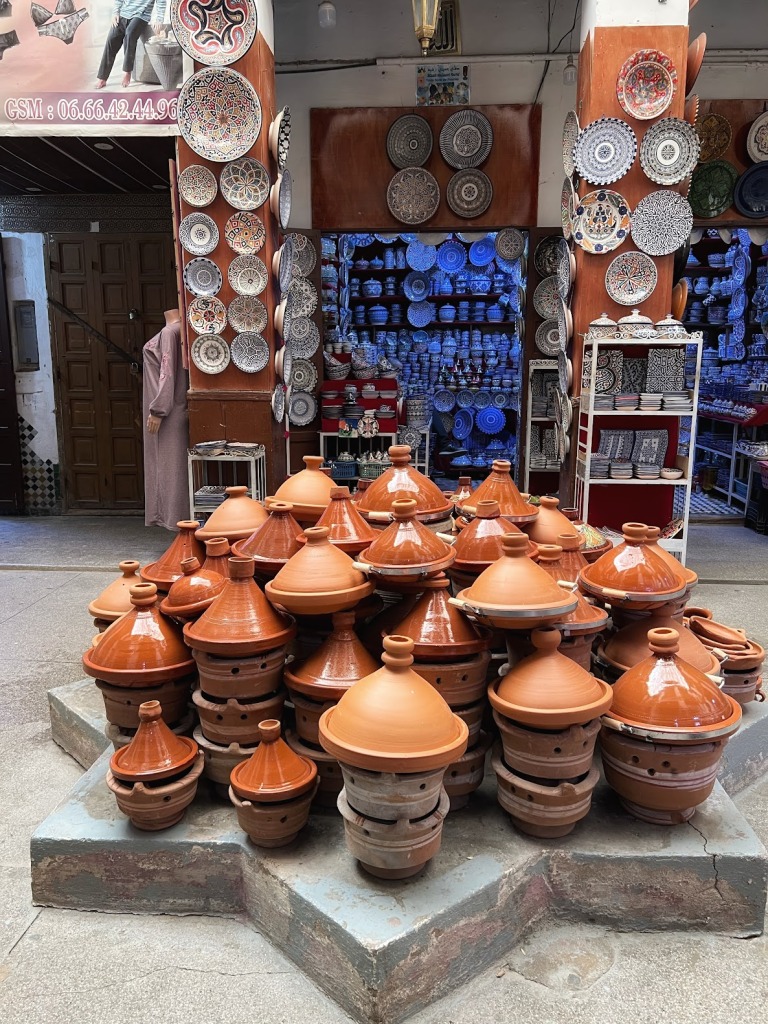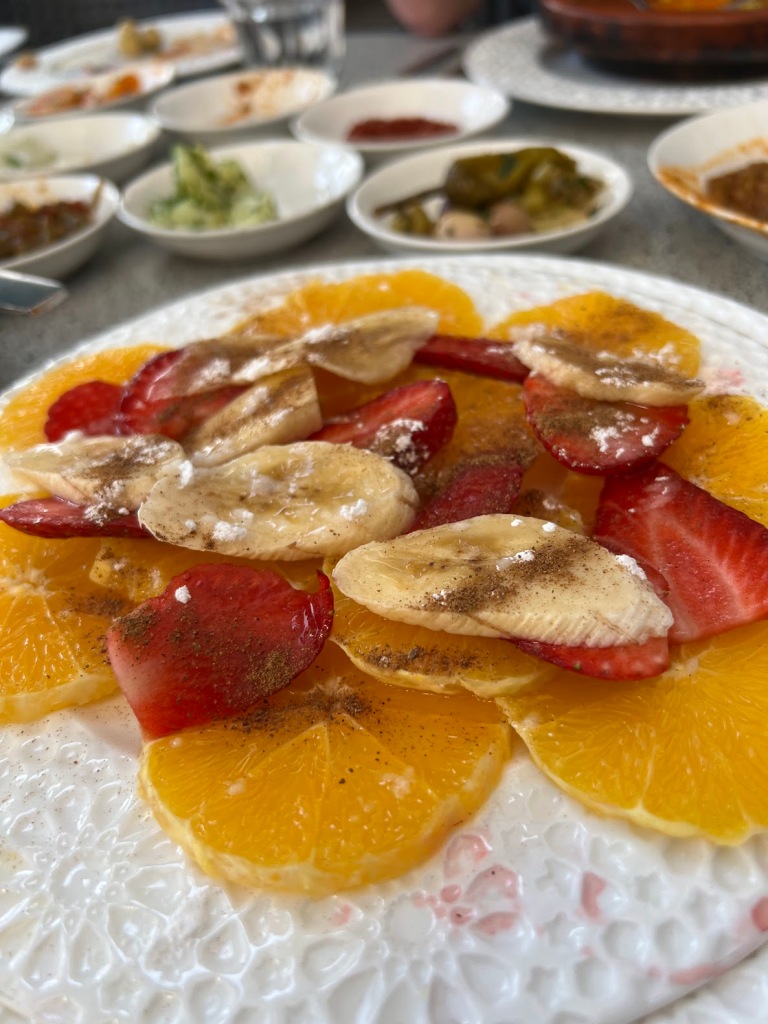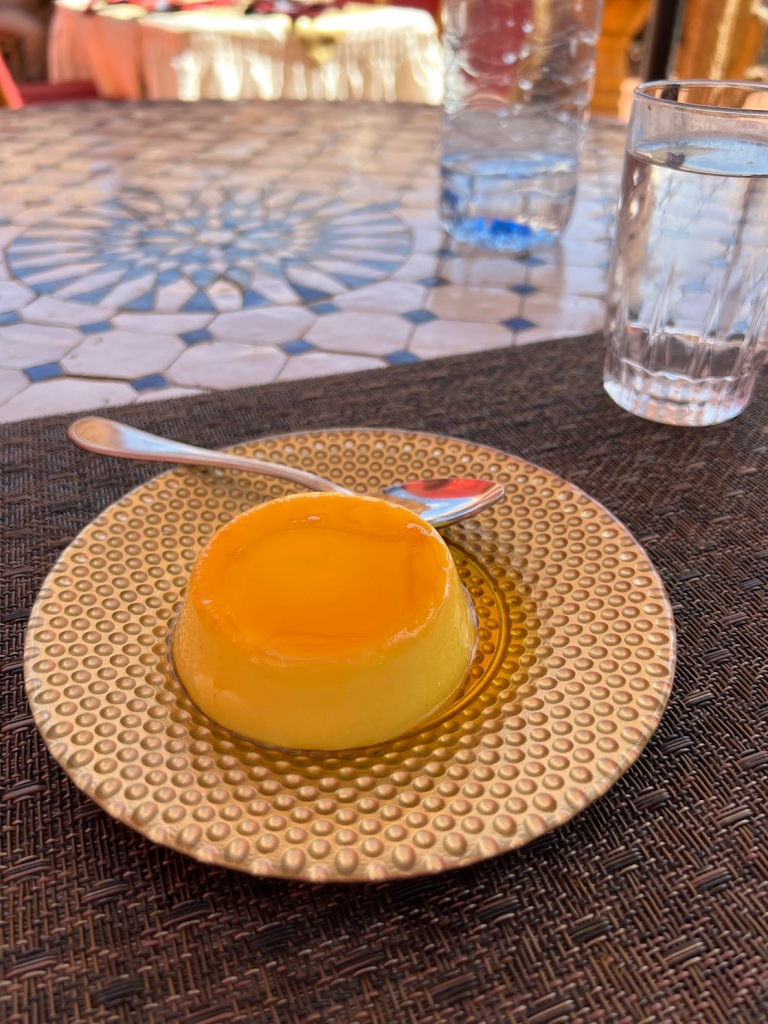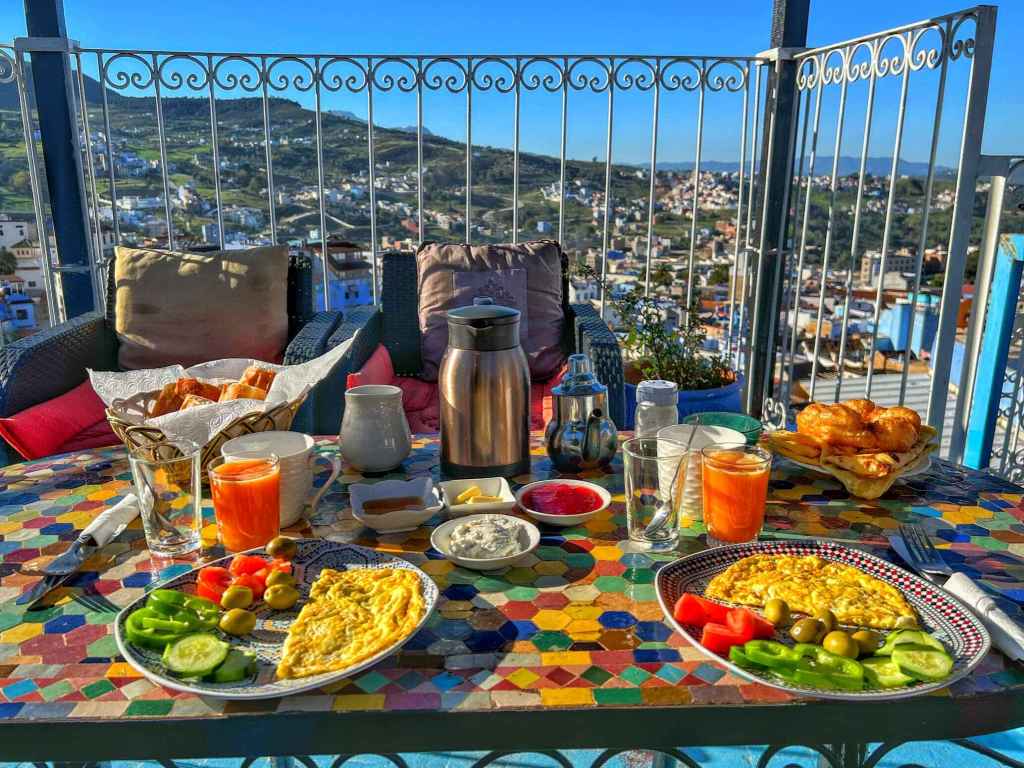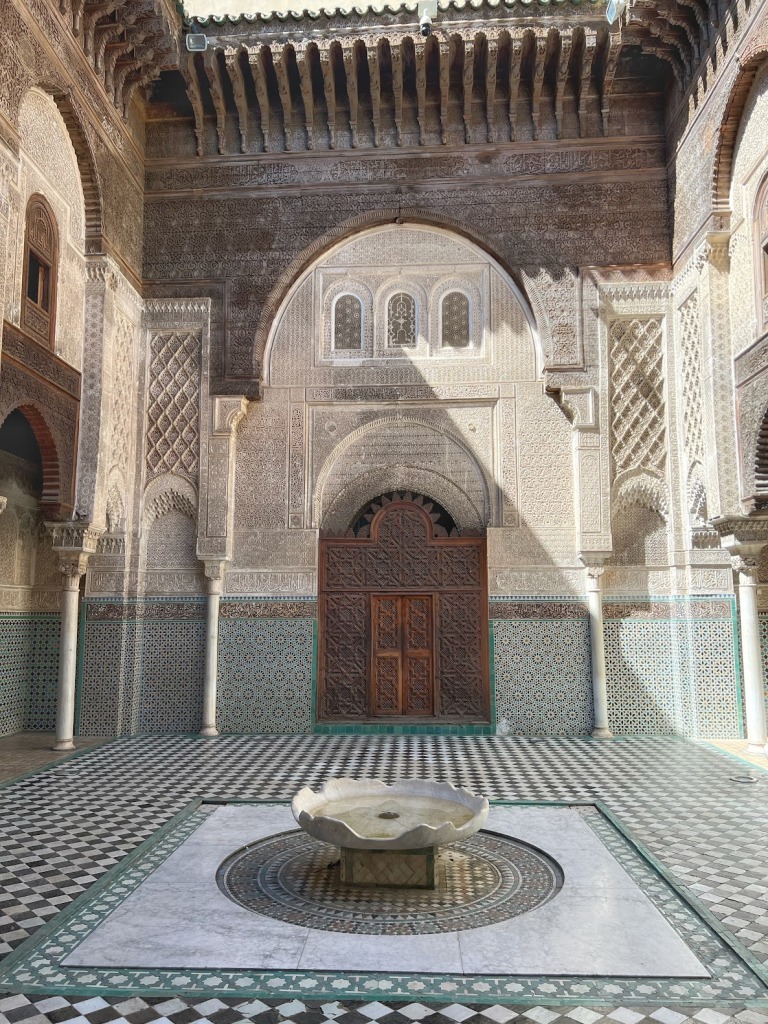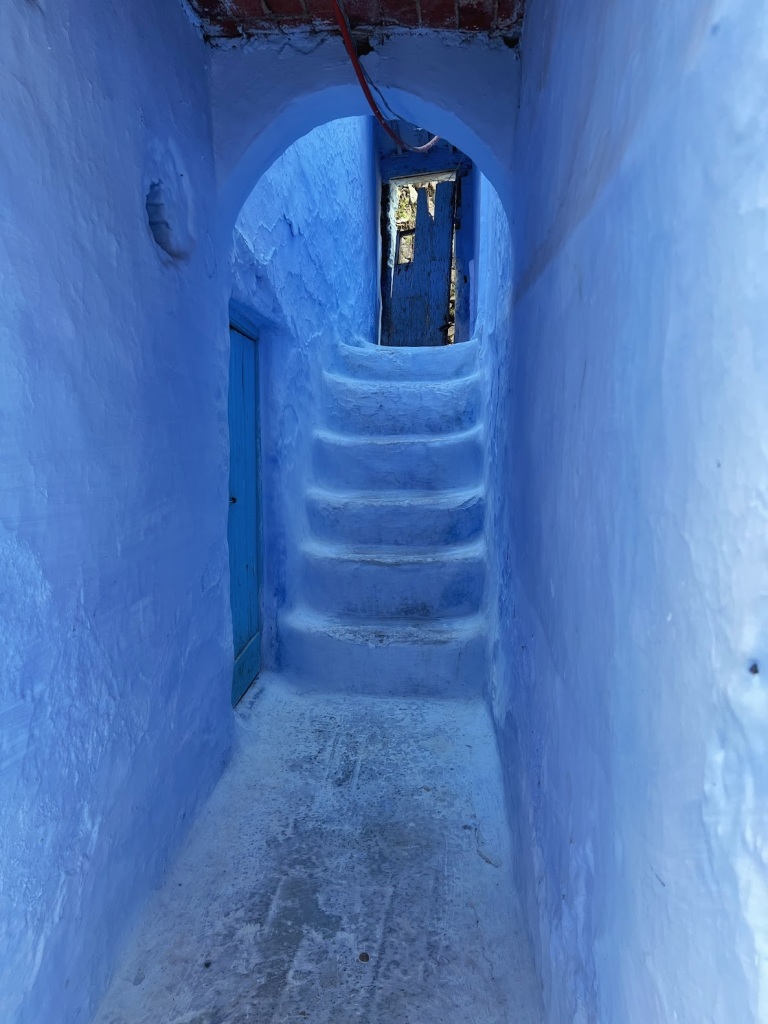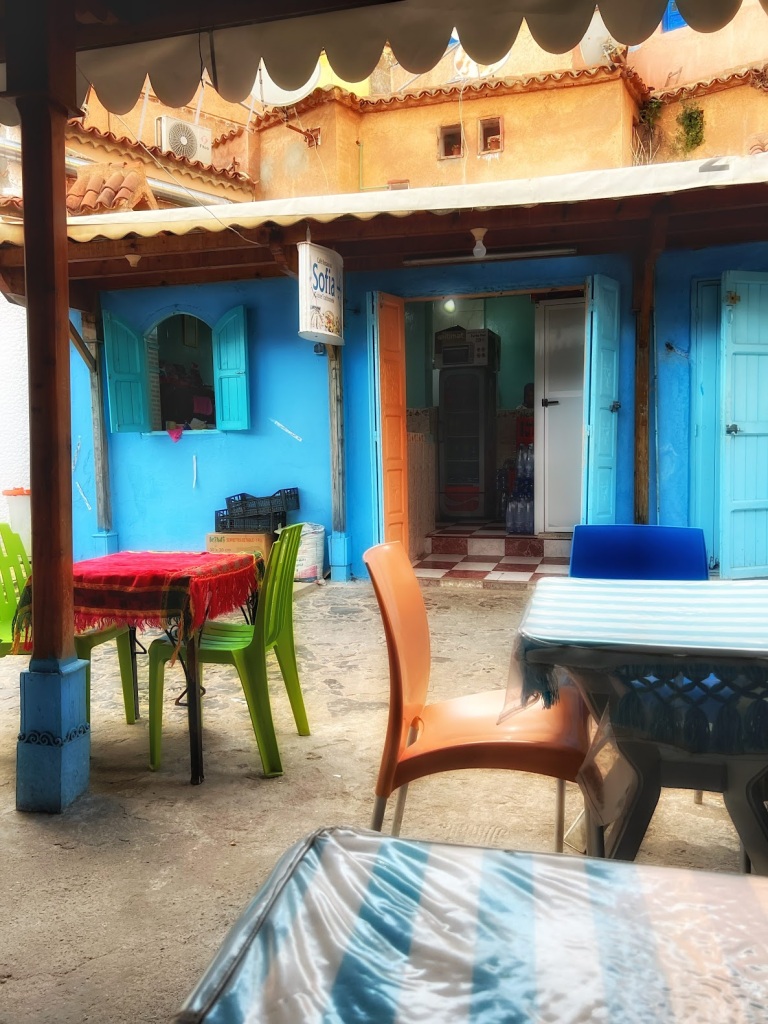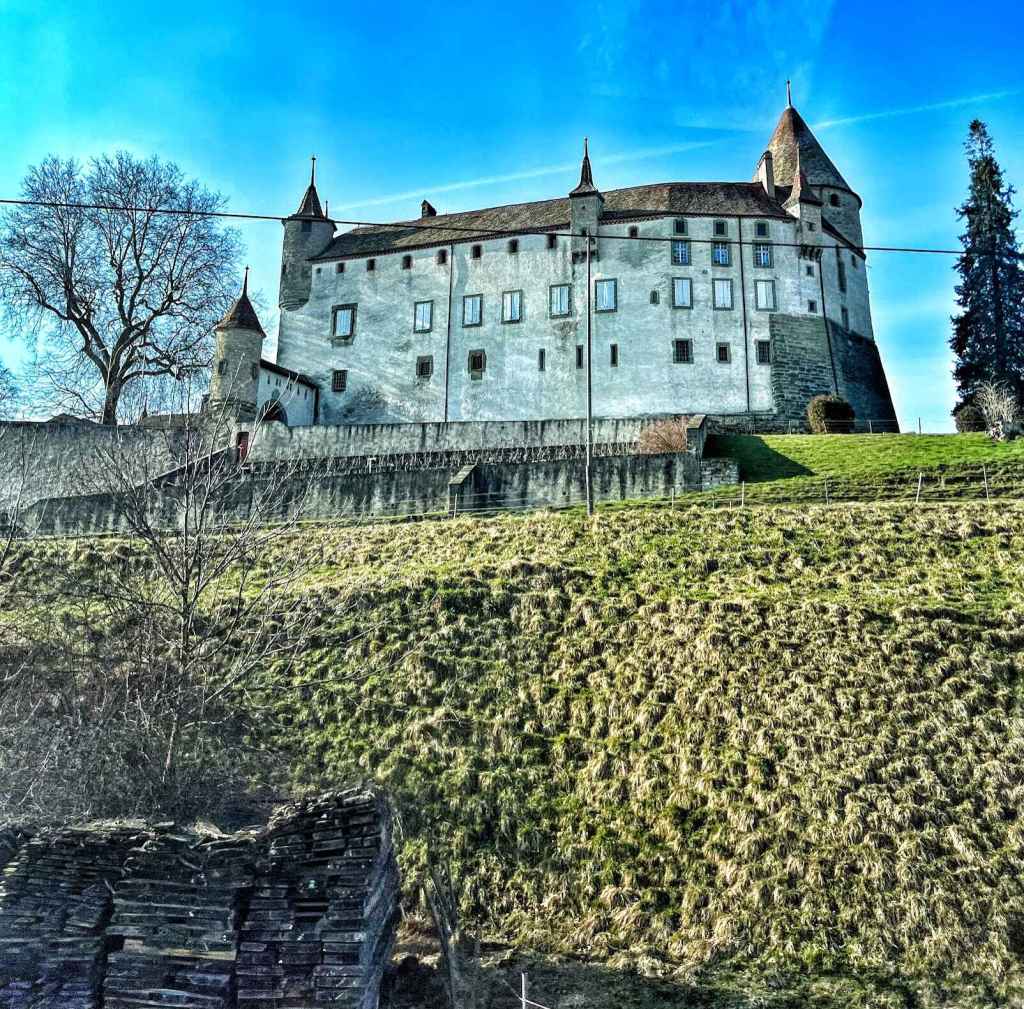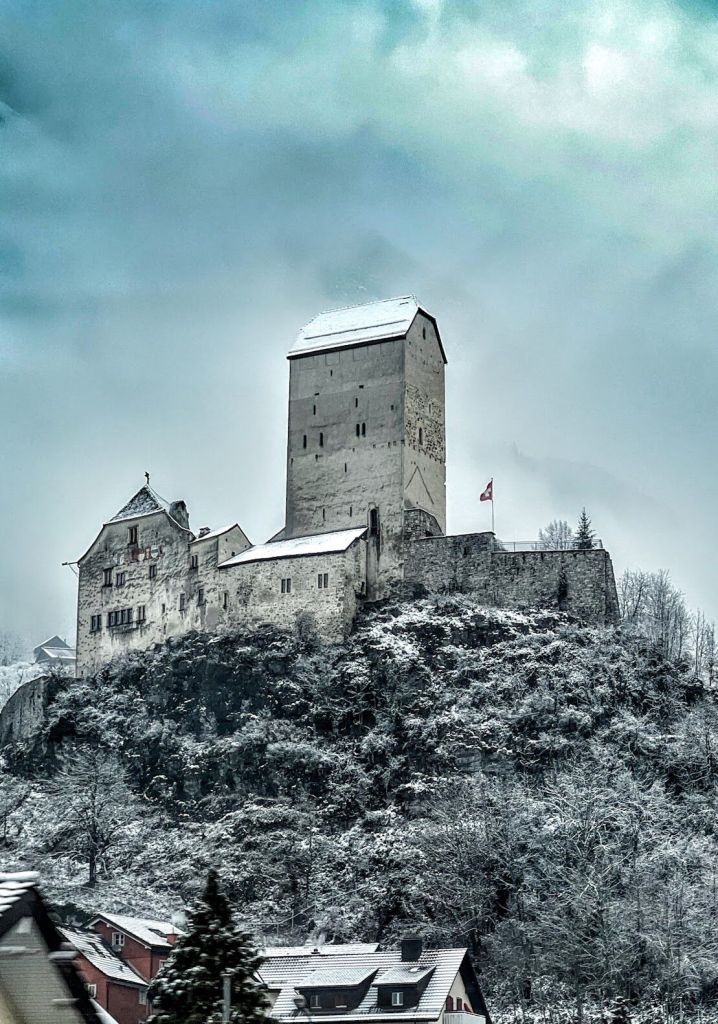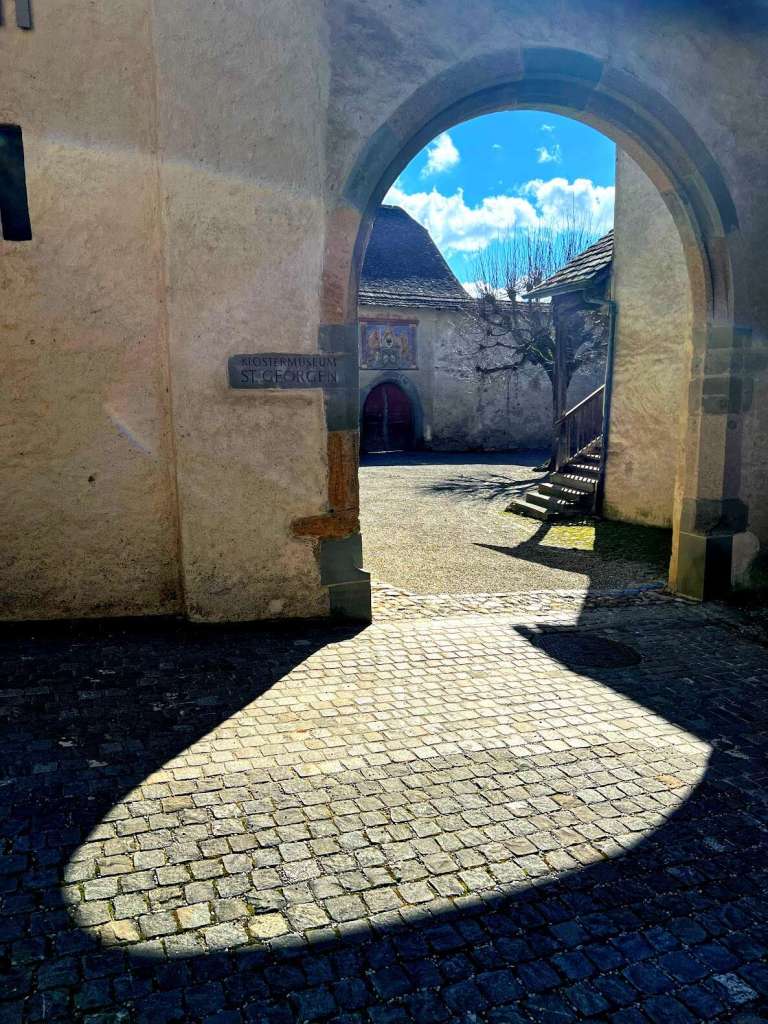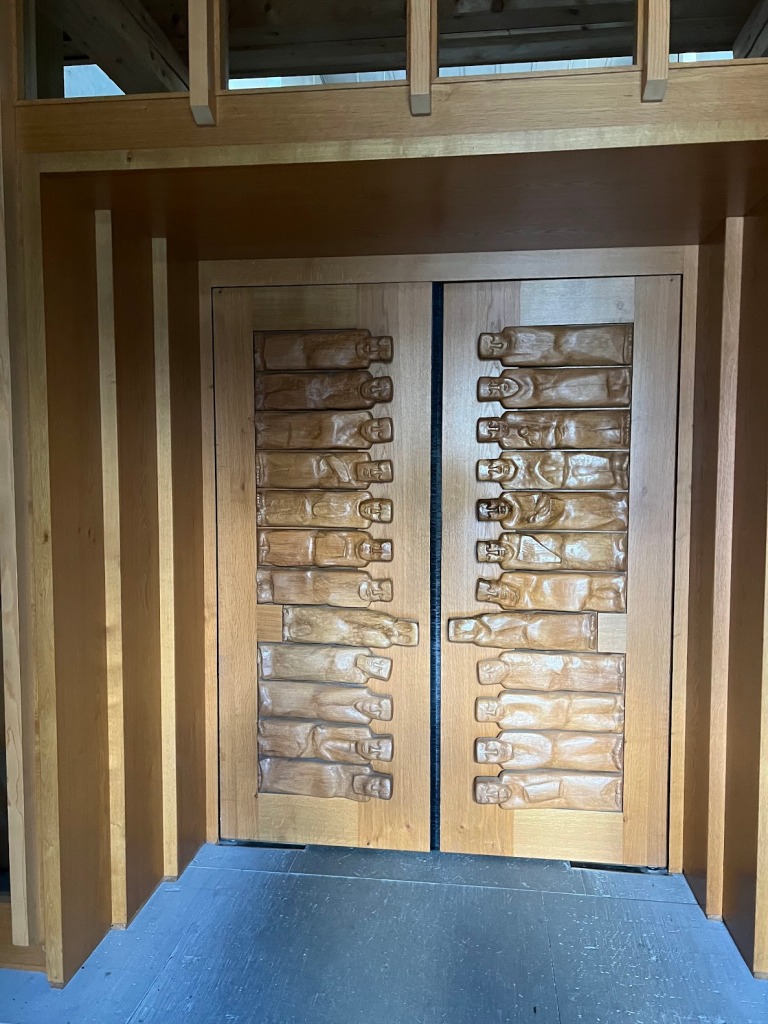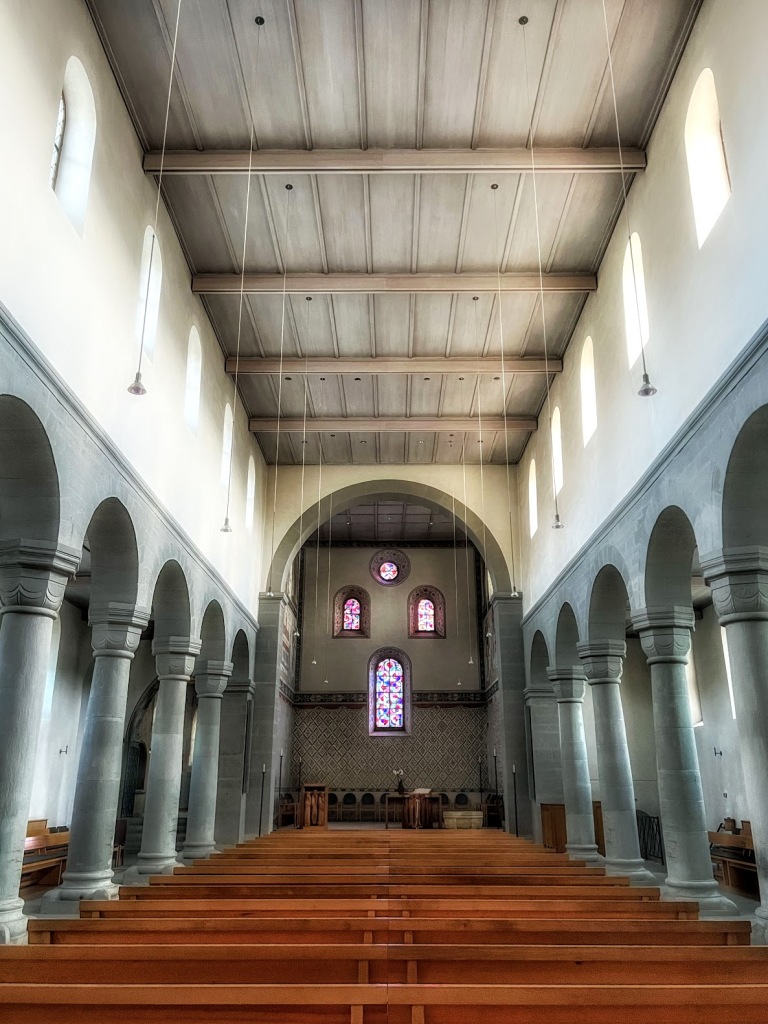Yep, another food post. But it is also a culture post. Mr. Glamper found this cooking class and signed us up in advance. These classes are held at (I think) the three cafe locations: Fes, Chefchaouen, and Marrakech. The cafes are owned by a Brit named Michael who fell in love with Morocco on his first visit in 2006. They get their name from the water clock that is near the Fes cafe.
This clock was built in the 1300s and is waiting to be rennovated.
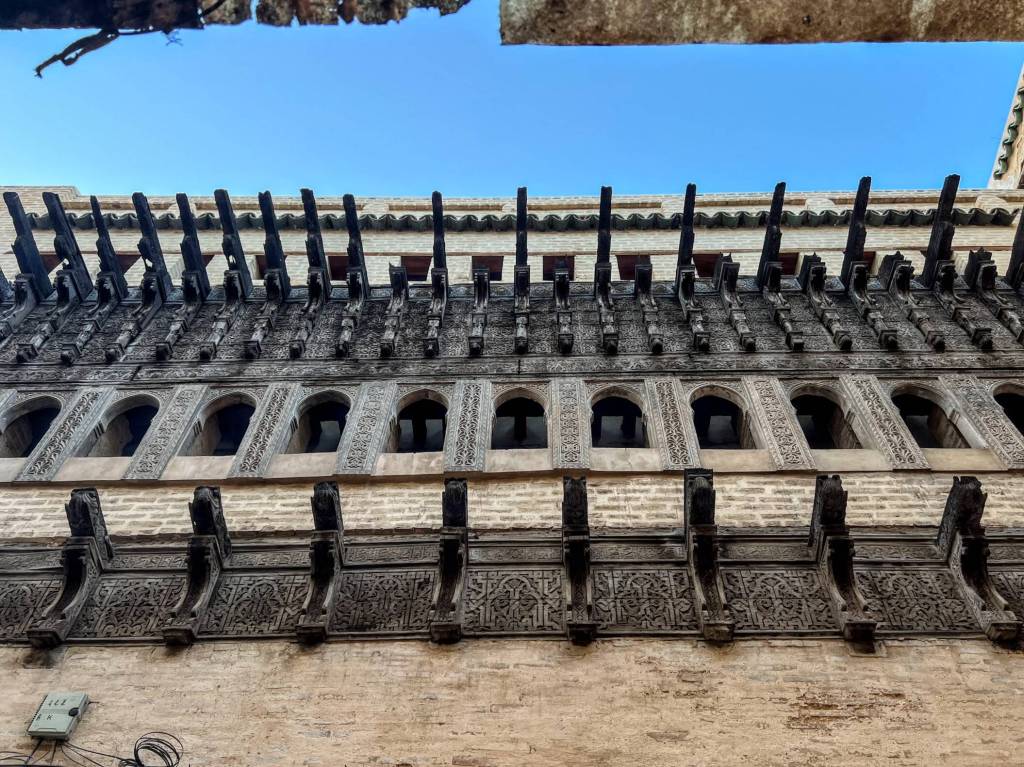
We had also eaten at Cafe Clock in Chefchaouen. Both cafes have a hip vibe and often have musicians drumming away.

But not in the morning. We found people were not particularly early risers.
Our fantastic teacher sat with us and the other couple to instruct us to choose the same three items: appetizer, main, dessert. The other couple was from Rome, and although the woman did not speak any English, her husband spoke some, and we used a lot of Google Translate.
After writing down our shopping list in Arabic (right to left), we went outside to the market. She told us about each butcher and what they specialized in. We chose lots of veggies, and we looked at the spice shop.
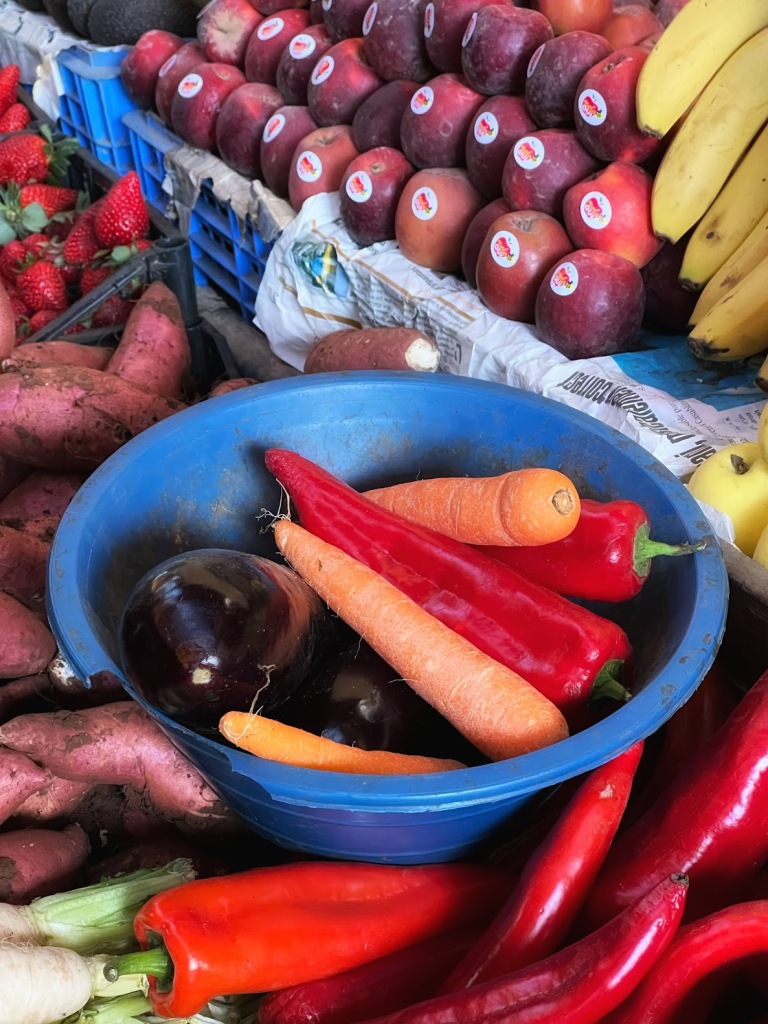
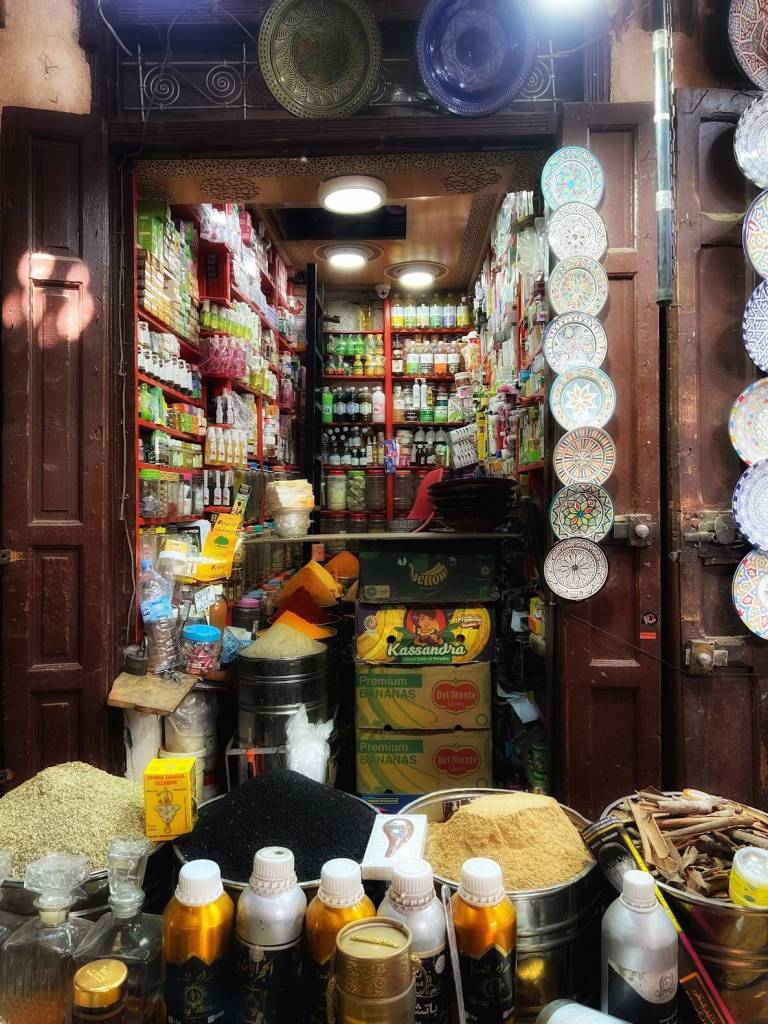
We students served as sous chefs, chopping, stirring, etc. We had thought she was going to buy a live chicken, as one does, but she said that was time-consuming, so she pulled a prepared chicken out of the fridge. Just like a cooking show.

After all the cooking, we enjoyed: soup and eggplant appetizers, chicken tajine, and macaroons with strawberries for dessert. While we ate, our teacher asked us what we want to know about culture in Morocco.

We loved our time here and would recommend it to anyone!
More photos at glampinginswitzerland’s Instagram.




